
Актёр, тренер, каскадёр, постановщик боёв - Роджер Юань успел попробовать себя в самых разных амплуа в экшн-индустрии. Его мастерство и знания боевых искусств, приобретённые за годы самообучения и постоянного развития, а также наставничество со стороны Чака Норриса, являются причиной того, почему Роджер остаётся столь востребованным, как перед камерой, так и за ней.
За свою сорокалетнюю карьеру Роджер успел поработать с самыми известными людьми в индустрии, как в кино, так и на телевидении, в крупнобюджетных проектах и независимых фильмах, в доморощенных голливудских картинах и различных фильмах за рубежом.
Если у вас есть любимый фильм, будьте уверены, Роджер, наверняка, сыграл важную роль в его создании, будь то подготовка актёров к ролям супер-шпионов, Людей Икс, драка в "Крутом Уокере" или роль босса триады в "Джоне Уике 3", он, явно, приложил к этому руку. Эволюция Роджера в кинобизнесе отражает его рост, как истинного мастера боевых искусств на бесконечном эволюционном пути.
Поработав с такими людьми, как Чак Норрис, Джеки Чан, Дэниел Крейг и Мэтт Деймон, Роджер был выбран для работы с известным франко-канадским режиссёром Дени Вильнёвом над эпической сагой - Warner Bros. и Legendary Pictures привлекли его к работе над последней киноадаптацией эпической саги Фрэнка Герберта "Дюна" с бюджетом в 165 миллионов долларов.
Для Роджера это стало возможностью обучить звёздный актёрский состав фильма и поставить хореографию того, что обещает стать одним из самых потрясающих сражений в кинематографе. Пока мы беседовали с Роджером, Warner Bros объявили, что дата выхода фильма будет сдвинута из-за пандемии COVID-19.
Роджер выделил время, чтобы поговорить с Kung-Fu Kingdom в рамках специального, расширенного, эксклюзивного интервью о своей жизни и работе в кино, включая глубокий анализ боёв, снятых для этого долгожданного научно-фантастического блокбастера, выход которого запланирован на 1-е октября 2021 года!
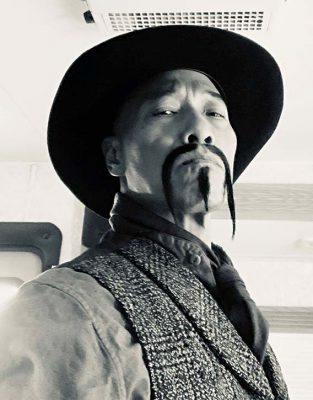
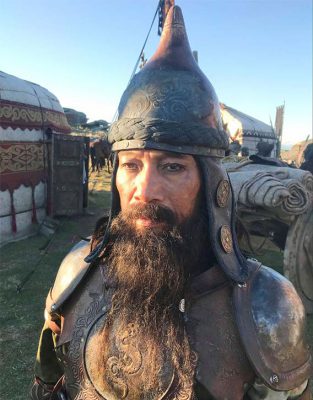
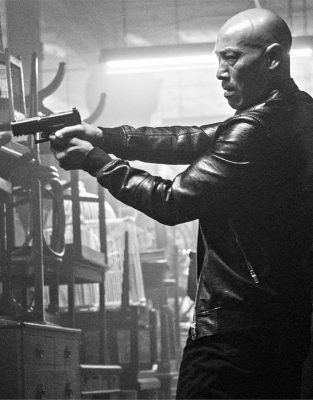
Привет, Роджер, и добро пожаловать в Kung Fu Kingdom! Здорово, что ты сегодня с нами.
Роджер Юань: Спасибо, Рамон, это честь для меня.
Можем ли мы, в общих чертах, узнать твоё мнение об этом сайте и названии Kung Fu Kingdom (или KFK для краткости)?
Роджер: Это очень впечатляет. Вы приглашаете настоящих бойцов, а также мастеров боевых искусств, актёров, и исполнителей, которые имеют большую известность и большое историческое значение. Само название уже звучит как отличный сценарий для фильма (смеётся). Оно довольно точно описывает то, что вы хотите сделать с точки зрения привлечения разных людей из разных слоёв общества. Я так понимаю, речь идёт не только о кунг-фу, но и обо всех боевых искусствах?
Именно. Наша миссия состоит в том, чтобы побудить 100 миллионов человек по всему миру заняться боевыми искусствами ради всех положительных преимуществ, которые они приносят людям, физически, ментально и социально - что ты думаешь об этой цели?
Роджер: Я думаю, это удивительно важное заявление. Разумеется, я только поддерживаю эту идею и саму концепцию. Я думаю, очень важно, чтобы люди понимали, совсем не обязательно начинать тренировки в кунг-фу, руководствуясь чувством собственной важности. Намного важнее то искусство внутри вас, которое вы сами хотите создать, и то, какой стиль вам подходит.
Некоторые люди будут более склонны заниматься бразильским джиу-джитсу, поскольку методика обучения здесь в большей степени основана на ощущениях, она более тактильна. Также есть западный бокс, вы можете изучать его, как вид искусства, для самообороны, или чтобы держать себя в форме и просто чувствовать себя свободнее в движении. Вас ведь никто не заставляет выходить на ринг, правильно? Это уже зависит от вас, но иметь правильную подготовку и хороший тайминг, я думаю, никогда не будет лишним.
Взять, хотя бы, занятия традиционными боевыми искусствами, такими как каратэ и традиционное кунг-фу, где важна даже просто работа в стойке и работа в ката. Ката обладает прекрасной интенсивностью, и к тому же развивает дыхание, координацию, мышечный контроль, работу в стойке и концентрацию. Так что, если вы используете это, но не привязаны ни к какой догме, ни к какому определённому стилю или системе, то я думаю, что из ката, будь оно из тайцзицюань - довольно плавного в своей основе - или из традиционной японской или окинавской системы, можно извлечь нечто прекрасное, и я рассматриваю это, как личное путешествие.
Истоки
Солидарен. Я хотел бы немного расспросить тебя о твоём прошлом. Как ты попал в боевые искусства? Кто, по-твоему, оказал на тебя наибольшее влияние?
Нью-Йорк: Боковые удары в прыжке с кровати в пятилетнем возрасте!
Роджер: Я родился в США, но, поскольку мои родители учились в колледже в Южном Иллинойсе, через несколько месяцев меня отправили обратно на Тайвань, где я жил с бабушкой и дедушкой. Я вернулся в США, когда мне было около четырёх лет, так я воссоединился с родителями уже в этом возрасте. У них была квартира в Нью-Йорке с одной спальней, и к пяти годам я прыгал с родительской кровати на свою, выполняя боковые удары в прыжке!
Влияние Брюса Ли
Я тогда как раз смотрел телешоу "Зелёный шершень". Там был этот азиат, владеющий боевыми искусствами, и я стал использовать его образ в качестве образца для подражания, и просто чтобы стать увереннее в себе. В то время было не так много азиатских актёров на телевидении, и вдруг появляется этот парень - Брюс Ли.
Тогда-то я и загорелся желанием изучать боевые искусства, но в то время мои родители были голодающими студентами, и с тех пор, как они приехали в США, они постоянно боролись за существование. Поскольку я не виделся с ними до четырёх лет, я очень стеснялся оказывать на них какое-либо давление. Я часто слышал, как они жаловались на финансовые трудности, поэтому никогда не настаивал на том, чтобы они записали меня в класс каратэ или школу кунг-фу.
К тому же, мои бабушка и дедушка по отцовской линии, зачастую принимали важные решения касательно всей семьи, и, поскольку я был старшим внуком, они не позволяли мне делать всё, что я хотел. Помню, я пробовался в младшую бейсбольную лигу в возрасте восьми или девяти лет, и неожиданно стал показывать неплохие результаты.
Затем они позвонили маме из Тайваня и сказали, чтобы она запретила мне играть в бейсбол, потому что какой-то ребёнок на Тайване получил удар по голове, играя в бейсбол, после чего впал в кому и умер. Это была странная ситуация, и поэтому уже с малых лет я знал, если я хочу изучать боевые искусства, то должен делать это самостоятельно.
Самообучение по книгам из библиотеки и фильмам о кунг-фу в Чайнатауне
Так как же ты обучился боевым искусствам?
Роджер: Примерно с 5 до 17 лет у меня не было формальных тренировок по боевым искусствам. Я всегда тренировался сам, просматривал книги из библиотеки по каратэ и дзюдо, изучал фотографии. По выходным я ходил в кинотеатры Нью-Йоркского Чайнатауна и смотрел фильмы о кунг-фу, чтобы хотя бы просто увидеть и попытаться имитировать движения таким образом.
Когда я учился в начальной школе и даже до определённого момента в средней школе, я был очень застенчив, но я изо всех сил старался побороть эту застенчивость и подружиться с другими детьми, которые изучали боевые искусства, и попросить их показать мне свои стили.
Первые шаги в каратэ в 17 лет
Только когда мне исполнилось 17, я попал в свой первый официальный класс киокусинкай каратэ, и стал сам оплачивать занятия. Когда у меня были деньги, я покупал выпуски "Кунг-фу. Взгляд изнутри" , "Каратэ в иллюстрациях" и другие журналы о боевых искусствах. Я даже читал "Дао Джит Кун До" Брюса Ли, о котором в то время не имел истинного представления, но я изучал диаграммы и пытался понять философию того, что он хотел выразить.
Между просмотром фильмов, чтением журналов, а иногда и воровством журналов (в возрасте 8-12 лет), когда у меня не было денег, я придумал, как можно попытаться сопоставить все различные движения, взяв многое из западного бокса, традиционного каратэ, кое-что из кунг-фу и тхэквондо. Я пытался скопировать то, что делали мои друзья. Думаю, одна из причин, почему я так преуспел в киноиндустрии, заключается в том, что я вырабатывал в себе умение очень точно считывать движения.
Вступление в школу каратэ Чака Норриса - теперь уже чёрный пояс, 4-й дан
Пару лет спустя, когда я поступил в колледж в Лос-Анджелесе, я уже был свободен и волен делать, что хотел. В Лос-Анджелесе не было школы киокусинкай, так что я сел на автобус и просто поехал от дома моего дяди в Торрансе, штат Калифорния в поисках школы. Я увидел большую вывеску с надписью "Каратэ Чака Норриса" и вспомнил, что это тот самый парень, который дрался с Брюсом Ли в "Пути дракона". Я также знал, что он был шестикратным чемпионом по каратэ, поэтому он, очевидно, знал, что делает. Я собирался испытать на себе его систему, хотел посмотреть, насколько хороши его чёрные пояса.
Я зашёл в студию в Торрансе, которой заведовали два его ученика, обладатели чёрных поясов, сам Чак часто бывал здесь по выходным. Конечно, я этого не знал, но в тот день, когда я пришёл, кого бы вы думали, я встретил? Чак Норрис преподавал в тот день; он работал с одним из своих чёрных поясов, и они разрабатывали новую форму чёрного пояса для его собственной системы, которую он хотел использовать, путём сочетания элементов сётокан каратэ, а также его тансудо, которое он изучал в ВВС, когда служил в Корее.
В общем, сижу я себе в наблюдательной зоне, смотрю их тренировку. И вдруг он оборачивается, смотрит на меня, подходит и говорит: "Привет, как поживаешь? Я - Чак." Слегка запинаясь, я стал рассказывать ему о том, что продолжаю учёбу в Калифорнийском университете, что у меня зелёный пояс по киокусинкай, но я не смог найти этот японский стиль здесь.
Тут Чак рассказывает мне о том, что его стилем изначально был тансудо, но с техниками рук, схожими с сётокан и киокусин, и я могу увидеть, что некоторые формы довольно похожи. Он сказал: "Ты должен тренироваться здесь". Так, Чак Норрис завербовал меня, чтобы я обучался по его системе, и теперь у меня уже был чёрный пояс, четвёртый дан.
Ещё я тренировался с Бенни "Реактивным" Уркидесом в его "Jet Center", где стал главным спарринг-партнёром для таких людей, как чемпион мира Питер "Шугафут" Каннингэм. На тот момент сэнсэй Бенни снимался в "Закусочной на колёсах" с Джеки Чаном и работал ещё над парой фильмов.
Ему хотелось отойти от своей славы непобедимого рекордсмена, чемпиона по кикбоксингу и переключиться на работу в кино, обучать актёров и ставить боевую хореографию для фильмов. Когда я только пришёл к нему, он предлагал мне драться профессионально, так как у меня были все необходимые навыки. Но я отказался.
Правая рука Бенни "Реактивного"
Не поймите меня неправильно, я люблю боевые искусства, и с удовольствием соревновался бы на ринге, но меня вполне устраивал мой профессиональный, чемпионский уровень подготовки, и я был рад возможности уже просто спарринговать со всеми этими великими людьми. Так я смог понять, насколько высок мой уровень. Я сказал ему, что подумываю о карьере и, будучи творческим человеком, хотел бы работать в кино. Сэнсэй Бенни сделал меня своей правой рукой, и мы организовали субботний бойцовский класс, чтобы тренировать его лучших бойцов.
Влияние Билла "Суперфута" Уоллеса и Дона "Дракона" Уилсона
Я получил столько сокровенных знаний и шанс лично познакомиться со всеми этими чемпионами, которые посещали Jet Center: с Биллом "Суперфутом" Уоллесом, Доном "Драконом" Уилсоном и даже с чемпионами по боксу. В то же время я оставался с Чаком Норрисом и участвовал в его международных турнирах, а с 89-го по 96-й год стал выигрывать чемпионаты в среднем и лёгком весе.
Я перескакивал из одной весовой категории в другую, поскольку меня не сильно интересовали трофеи или победы на чемпионатах, мне было важно получить боевой опыт. Иногда всё решают габариты и хитрость, а в случае с другими бойцами, важно умение держать дистанцию. Я помню, как сэнсэй Бенни говорил, что иногда, когда он начинал одерживать победу за победой, он специально дрался с крупным противником, просто чтобы испытать себя.
Мне это показалось довольно интересным. Сама мысль о том, что нет идеального сценария для боя, нужно просто драться.
Изучение западного бокса, кунг-фу, муай-тай и бразильского джиу-джитсу
На протяжении многих лет я изучал различные системы. Я занимался западным боксом, муай-тай, немного шаолиньским кунг-фу, и ещё у меня синий пояс по бразильскому джиу-джитсу. Разумеется, я делаю это не ради поясов, а скорее для тренировки, а также для того, чтобы расширить мои знания и понять, как их лучше всего использовать.
Карьера
Расскажи, как ты попал в кинобизнес. Какой была твоя первая работа в качестве каскадёра?
Роджер: Моя первая работа была в телешоу "Человек-животное". К этой работе меня подключил Аарон Норрис, брат Чака. Он был координатором на нескольких шоу, для меня же это был первый подобный опыт.
Я поставил боевую сцену с главным актёром Саймоном Маккоркиндейлом. В то время я познакомился с другими людьми, которые теперь также являются светилами мира боевых искусств. Я помню, как в тот день познакомился с Джеффом Имадой, который к тому времени уже успел закрепиться в Голливуде, занимаясь постановкой трюков. Фильм ужасов "Дом" был одним из первых фильмов, в которых я принял участие, как каскадёр.
Работа в финансовой сфере быстро наскучила, тренировки с Чаком Норрисом - совсем другое дело!
Я снова попал в кино через Аарона Норриса. И вот однажды он говорит мне: "Эй, Родж, если ты готов лететь на Филиппины, я подтяну тебя для работы над этим фильмом." Это был один из фильмов Чака Норриса "Без вести пропавшие". В общем, я отказался. В глубине души я очень хотел получить эту работу, но я также обещал моим родителям, что закончу колледж, в то время я ещё учился в Калифорнийском университете. Мне оставался ещё один год, чтобы получить диплом по математике.
Поэтому я решил, прежде чем заняться чем-то ещё, какой бы ни была моя мечта, я должен быть хорошим сыном, сосредоточиться и, хотя бы, получить диплом. После окончания университета, я начал работать на разных финансовых должностях, но мне это быстро наскучило. Это было, когда я ещё обучался в школе каратэ Чака Норриса и начал преподавать. Да, у меня была работа с девяти до пяти, но я всё не мог дождаться момента, когда приду в студию и начну тренироваться. Тогда я понял, что именно этому занятию я хочу посвятить свою жизнь, поэтому начал заводить знакомства с людьми, которые, как я думал, могли бы мне помочь.
Большой прорыв Роджера в качестве координатора боёв
Мой большой прорыв произошёл с "Исчезающим сыном". Моё имя было упомянуто среди многих других людей, которые были координаторами боёв на этом шоу.
Я был в Лос-Анджелесе, мне позвонил продюсер, Оскар Косто и сказал: "Эй, слушай, есть тут один актёр, Чи Муи Ло, нужно его потренировать. Ты сможешь? Можешь поднатаскать его за несколько недель, прежде чем он отправится в Вирджинию?" Я согласился и спросил, какому стилю я должен его обучить? Он ответил: “Да, не важно, кикбоксинг там… да всё, что угодно, лишь бы он достойно выглядел в кадре."
В общем, я обучил его, отснял несколько кадров и отправил видеозапись продюсеру. Эти кадры, на которых он двигался, были великолепны, но, по-видимому, когда он прибыл в Вирджинию, то малость растерялся.
Он забыл многие движения, поэтому Оскар позвонил и спросил, не хочу ли я прилететь, чтобы стать постановщиком боёв для этого телешоу. Я ответил: "Конечно, да!" Я отправился в Вирджинию и взял с собой Джей Джея Перри. Он тогда только вернулся из армии, и это был его первый опыт работы в кино и на телевидении. Я использовал его в качестве дублёра Рассела Вонга. Потом я поработал ещё над четырьмя экшн-фильмами, и одним сериалом из 13-ти эпизодов в Сан-Диего. Думаю, для меня это был, пожалуй, один из судьбоносных моментов, когда я стал уже более известен благодаря своим навыкам.
Трейлер "Исчезающего сына"
Работа с Джеки Чаном и Чаком Норрисом
Это так круто! Помимо трюков, позже ты сам начал сниматься, и с тех пор делил экранное время с настоящими гигантами экшн-индустрии, включая Джеки Чана в фильме "Шанхайский полдень", Боло Йена в "Сильнейшем ударе", и тебе также предстояло выступить в качестве противника Чака Норриса в сериале "Крутой Уокер, правосудие по-техасски”. Какие твои самые яркие воспоминания, связанные с тем, как ты работал плечом к плечу со своим наставником?
Роджер: Отчасти мной движет страх. И как мастера боевых искусств это заставило меня попытаться узнать больше и углубиться в своё ремесло. Вот почему я переключился на актёрскую работу и получил несколько ролей. Перерыв наступил во время работы с Джеки Чаном над "Шанхайским полуднем".
Роджер на экране в роли Лазаря
Чак посмотрел этот фильм и также заметил мой фирменный почерк в "Исчезающем сыне", поэтому, по мере возможности, он тоже стал подкидывать мне кое-какую работу, включая небольшие эпизоды в "Крутом Уокере", плюс работу за кадром, когда надо было помочь с хореографией в некоторых экшн-эпизодах. Меня попросили сыграть роль Лазаря сразу после того, как я закончил с "Шанхайским полуднем".
Это был двухчасовой эпизод, и для меня было настоящей честью получить один из эпизодов, названный именем моего персонажа. Это было одно удовольствие, поскольку я смог придумать для Лазаря те движения, которые мне самому нравились.
Я работал с Виком Кинтеро и с Эриком Норрисом, который был координатором трюков, а также работал в составе второй команды, снимавшей боевые сцены с нашим участием. Мне предстояло сразиться с Чаком и его дублёром - каскадёром Чипом Райтом, с которым я обычно соревновался на турнирной арене. Так что, было действительно классно держаться одной семьёй в этом смысле.
Чак всегда активно поддерживал все мои начинания, он отличный друг и наставник. Нас многое связывает, поэтому, когда я стал работать над хореографией для "Крутого Уокера", он был очень доволен, и захотел вернуть меня. Я думаю, Лазарь был ярким примером его отношения ко мне, было так здорово придумывать этот бой, и затем воплощать его на экране с моим учителем.
Помимо актёрской и каскадёрской работы ты также стал тренировать людей довольно известных в индустрии развлечений. Как так получилось?
Роджер: Всё началось, когда я жил в Ирландии, в то время у меня было не так много работы. С возрастом я стал замечать, что постоянные тяжёлые, высокоинтенсивные тренировки, будь то бокс, кикбоксинг, бег на пределе сил или игра в баскетбол, постепенно дают о себе знать.
Мои колени, ахилловы сухожилия, спина, плечи - всё начинало болеть. Именно тогда я понял, что должен не только переключиться на другие боевые искусства, но и пересмотреть методы своих физических тренировок, если хочу продлить свою карьеру и собственное здоровье.
Я сосредоточился на менее интенсивных занятиях, таких как плавание и йога, и вернулся к более традиционным боевым искусствам. Я понял, что если делать всё в замедленном темпе, это может принести результаты, и что, напрягая правильную мускулатуру, я могу генерировать больше энергии и экономно её использовать. То есть, я мог бы восстановиться гораздо быстрее и с меньшими усилиями. Вот тогда-то мне и стали поступать звонки с просьбами о частных тренировках.
Тренировки Генри Кавилла, Людей Икс, Дэниела Крейга и Мэтта Деймона
Я тренировал Генри Кавилла, помогая ему достичь фантастической формы для фильма "Война богов: Бессмертные", который позже привёл его к роли Супермена. Ещё я тренировал Джейсона Флеминга (для роли Азазеля) и весь актёрский состав фильма "Люди Икс: Первый класс", ну и, конечно же, Дэниела Крейга для "Скайфолла". Мне тогда позвонил мой менеджер из Америки и сказал, что есть музыкант и певец, который хочет, чтобы я его потренировал. Я отказался, потому что хотел сосредоточиться на работе в кино, но он предложил мне, прежде чем я откажусь, поговорить с ним по телефону.
Музыкантом оказался Тим Макгро. В общем, я закончил со "Скайфоллом" и начал работать с ним. Это третий зубец моего трезубца – актёрское мастерство, каскадёрская работа и обучение.
Я наслаждаюсь всеми тремя видами моей деятельности, и знаю, что в каждом из них есть свои нюансы, однако все они бросают мне тот или иной творческий вызов.
Джеймс Бонд: развитие боксёрских навыков Дэниела Крейга
Ты выступал боевым тренером в различных фильмах, в том числе, в вышеупомянутом "Скайфолле" про Джеймса Бонда и в фильмах о Джейсоне Борне. И как же ты превращал ребят вроде Дэниела Крейга и Мэтта Деймона из актёров в "смертельное оружие" с голыми руками?
Роджер: Ну, в примечаниях координатора трюков Гэри Пауэлла, было сказано, что у Бонда нет никакого особого стиля и он двигается не как мастер боевых искусств, а просто, как человек, умеющий драться.
Тренировки Дэниела включали в себя по большей части боксёрскую технику; я учил его правильно двигаться, бить по лапам, и он довольно быстро освоился. Затем я учил его использовать локти, чтобы блокировать удар и контратаковать. Показывал ему, как сокращать дистанцию.
Он научился выбрасывать левый хук и джеб, но что, если ему придётся вступить в ближний бой, например в телефонной будке, где он не сможет использовать свои навыки? Я учил его генерировать энергию из центра своего тела, таким образом, он мог выполнить своим телом, бёдрами и плечами любую технику, которую я ему показывал. Я также поставил хореографию для некоторых боевых сцен, но больше всего я горжусь тем, что научил Дэниела чувствовать себя уверенно, используя боксёрскую технику.
Джейсон Борн: привнесение утончённости и универсальности в движения Мэтта Деймона
Мэтт Деймон уже проходил обучение филиппинским боевым искусствам, а также грязному боксу и трэппингу, которые он использовал в первых трёх фильмах про Борна (трэппинг - мгновенная иммобилизация конечностей противника, дающая короткую возможность нанести удар, пока он обездвижен - прим.).
В четвёртом фильме ("Джейсон Борн", 2016) я хотел использовать некоторые из этих элементов, но и понимал, что Джейсон Борн стал старше, поэтому теперь он намного эффективнее. Мы также знали, что финальная схватка между ним и Венсаном Касселем будет напряжённой, поскольку они оба были первыми агентами "Трэдстоуна", они своего рода прототипы.
Кроме того, между этими двумя было столько ненависти с тех пор, как спец - персонаж Касселя, убил отца Борна, и Борн об этом узнал. А это подразумевает, что их драка должна быть гораздо более интуитивной, меньше завязанной на технике и гораздо более жестокой.
Мэтт привёл с собой своего тренера по боксу, Мэтта Байамонте. Я сказал его тренеру во время тренировки Мэтта: "Смотрите; он выглядит очень хорошо, его руки и корпус двигаются отлично. Теперь, чтобы показать чуть больше на камеру, я хочу, чтобы вы позаботились о том, чтобы всякий раз, когда Мэтт выполняет технику, его колени, бёдра и пальцы ног находились на одной линии и двигались синхронно. Теперь внимание сосредоточено не только на корпусе, я хочу, чтобы вы заставили двигаться всё его тело."
В одной из драк есть момент, когда Борн ломает стул, чтобы использовать его в качестве оружия. Во всех фильмах Борн обычно берёт что-то в руки и превращает это в оружие; простые вещи, такие, как свёрнутый журнал или даже ручка.
В этой сцене на него нападали со штангой, в него бросали гири. Так что же было доступно ему на этот раз? Мебель. Поэтому я попросил его поднять этот стул и сломать его, чтобы использовать в качестве оружия. Это показывает, что он обладает внушительной силой и создаёт своё собственное оружие, а не просто хватает всё, что попадётся под руку.
Бонд и Борн во многом схожи, это как две стороны одной медали. Однако Борн, благодаря своему программированию, подвержен промыванию мозгов, что и позволяет ему выйти на этот уровень борьбы. Он даже не знает, зачем он это делает, это просто рефлекс.
Бонд - гораздо более органичен, он человек, который понимает, что ожидаемая продолжительность жизни агента 007 может быть не очень долгой, поэтому, что бы он ни задумал, он пойдёт на это. И с Мэттом, и с Дэниелом я определённо использовал тайцзицюань, чтобы усовершенствовать их движения и помочь им усвоить принцип выработки энергии.
То, как снимался Борн, в корне отличается от того, как Сэм Мендес снимал "Скайфолл". Дэниелу пришлось усваивать больше и пройти через весь процесс обучения. Борн же более неистовый, и камера постоянно двигается, создавая множество разных ракурсов. Так что, здесь речь шла скорее о коротких экшн-фрагментах. Экшн-сцены создавались исходя из особенностей персонажей, а подготовка актёров проходила с учётом того, как будет сниматься сцена.

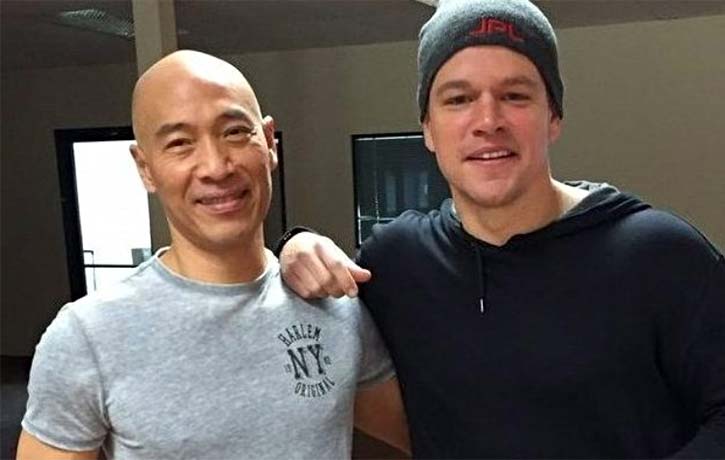
"Дюна". Эксклюзив: искусство эпичных боёв
Потрясающе. Ладно, для тех, кто не знаком с данной историей, книга "Дюна" содержит подробные описания множества боевых стилей. Как ты изобретал боевые системы для фильма?
Роджер: Создание конкретных боевых стилей для гвардии (Падишаха) императора, Сардаукаров, Атрейдесов и Харконненов, это, в общем, то на чём мы и сфокусировались в этом первом фильме. Мы ещё не добрались до самого Пола Атрейдеса (которого играет Тимоти Шаламе), обучающего фрименов, поскольку это будет уже во втором фильме.
Для Атрейдесов, так как их оружие немного похоже на короткий меч, я использовал больше филиппинских стилей: кали и эскрима. Сардаукары - это скорее группа, нечто среднее между викингами-берсеркерами и самураями.
Наконец, Харконнены, из-за их звериных и садистских качеств они напоминают мне варваров древности, вроде Чингисхана и монголов, даже по манере двигаться - они эффективны, но не очень точны и их стиль грубоват.
Атрейдесы, напротив, чётче двигаются, и их техника заточена как раз под то оружие, которым они сражаются. Это те три типа боевых систем, которые мы хотели продемонстрировать в фильме, и которые, как мы надеемся, подарят зрителям пиршество для глаз и они подметят для себя какие-то нюансы.
Что касается боевого стиля "странный путь" у Ребекки Фергюсон, которая играет маму Пола Атрейдеса, есть сцена, где она обучает его скрытому клинку, и для того, чтобы выжить, он должен полагаться на боевой стиль Бене Гессерит. Я не знаю, вошло ли это в фильм, но думаю, мы увидим его навыки ножевого боя.
Свобода творчества
Как много свободы предоставил тебе режиссёр Дени Вильнёв при создании экшн-сцен, программы тренировок и боевой хореографии?
Роджер: Дени был великолепен, и, конечно же, он дал мне чёткие указания по части того, как он хотел, чтобы фильм выглядел, я следовал всем его примечаниям, касательно его пожеланий и, собственно, того, чем является "Дюна". Я получил больше творческой свободы, когда дело дошло до работы над материалом, снимавшемся при помощи технологии захвата движения. Мы две недели снимали в Лос-Анджелесе сцены с motion capture, которые состояли, по большей части, из основных экшн-сцен, сгенерированных компьютером и включали также эпизоды сновидений Пола Атрейдеса, ставшего Фрименом.
Дени был рядом и наблюдал за процессом съёмок. Ему очень понравились некоторые эпизоды, даже те, что я снимал в качестве превью для тестовых показов. Затем ударил COVID, и нам пришлось свернуть съёмки. Мы готовились уже две недели и у нас была ещё неделя на съёмки в Лос-Анджелесе, мы не знали, когда всё снова откроется.
Я обсуждал разные варианты с продюсером Джо Караччоло мл. Сначала они хотели, чтобы я наблюдал за съёмками motion capture, которые можно было бы снимать там, в студии, используемой для съёмок кат-сцен в видеоиграх, то есть, я бы наблюдал и делал заметки удалённо, пока они снимают. Но я сказал "нет", поскольку мне было необходимо присутствовать там физически, чтобы направлять актёров и, по ходу дела, корректировать хореографию, чтобы привести всё это в порядок и собрать все эпизоды воедино.
Столкновение с COVID'ом и движение вперёд
Другим вариантом было - лететь в Будапешт и снимать всё это вживую в полном снаряжении. Третья альтернатива состояла в том, чтобы сниматься в Лос-Анджелесе, но на тот момент никто ещё не знал, когда Лос-Анджелес откроется для съёмочных проектов. В общем, Дени хотел, чтобы я присутствовал там лично, а сам он будет наблюдать за происходящим по Скайпу и через удалённую камеру.
Лос-Анджелес открылся в июне, мы были готовы, все протоколы были у нас на руках. Кстати, "Дюна" стал самым первым фильмом в Америке, который вернулся в производство сразу после локдауна, с установленными протоколами по COVID'у. Мы были испытательным случаем, по сути, лабораторными крысами! Нас проверяли три раза в неделю - по понедельникам, средам и пятницам - мы должны были чётко следить за тем, чтобы все сидели под замком, находились на карантине и никуда не выходили.
Репетиции в 87Eleven Action Design
В первую неделю производства мы возвращались в "87eleven" к нашим предыдущим репетициям и тренировкам, но уже с новыми заметками, касательно того, чего хотел Дени. Мы должны были подготовить основной эпизод, который представлял собой боевые сцены с участием Пола Атрейдеса. Дени был в Монреале и наблюдал за всем происходящим через камеру. В общем, всё, что мы снимали, впоследствии отправлялось Дени.
Он всё это смотрел и обычно говорил: "Я доволен, если Роджер доволен." Он полностью доверил мне контроль за теми боевыми эпизодами, которые войдут в фильм. Дени - потрясающий визуальный рассказчик, и я знал, какую бы экшн-хореографию я ни выбрал для фильма, в первую очередь нужно принять во внимание; вписывается ли она в историю? И подходит ли она персонажу в соответствии с его концепцией и видением?
Дело было не в том, насколько броским я мог бы сделать конкретный боевой эпизод, или насколько крутым я мог бы показать кого-то из актёров, а скорее в том, насколько неистовыми, привлекательными и правдоподобными мы могли бы сделать экшн-сцены в этом фильме.
Тренировки Джоша Бролина и Джейсона Момоа
Поразительно. Тебе предстояло работать с актёрами, которым не впервой играть роли в экшн-фильмах - Оскаром Айзеком ("Звёздные войны"), Джейсоном Момоа ("Лига справедливости", "Аквамен"), Джошем Бролином ("Дэдпул 2") и Ребеккой Фергюсон ("Миссия невыполнима: Племя изгоев" / "Фоллаут").
Какие задачи тебе приходилось ставить перед ними и насколько хорошо они справлялись? Можешь назвать наиболее запомнившиеся моменты (какими бы неожиданными или причудливыми они ни были)?
Роджер: Джош Бролин (который играет Гурни Халлека) был здесь, в Лос-Анджелесе, и я отправил его практиковать кали вместе с одним из моих друзей, Шиоши - одним из ребят Дэна Иносанто. Затем я прилетел с дублёром Тимоти, чтобы начать тренировать Джоша примерно за неделю до того, как он полетит в Будапешт. У него только родилась дочка и он, по его же словам, был так близок к тому, чтобы отправить Дени электронное письмо со словами: "Я не могу сняться в этом фильме, не могу, не могу!" (смеётся)
Его тренировочный бой с Полом в самом начале - это очень сложный эпизод, который перетекает от тренировки к почти реальному бою, так как Гурни всеми силами даёт Полу понять, что на Арракисе это вопрос жизни и смерти. Это один из самых напряжённых эпизодов, и Джош с ним справился. Он великолепен и к тому же такой перфекционист. Джейсон Момоа хорошо двигается, он участвовал во многих боевых эпизодах, и не понаслышке знает, как орудовать мечами.
Мне нравится приспосабливать актёров в соответствии с их сильными и слабыми сторонами, чтобы мы не касались определённых областей. Например, если у кого-то больное колено или плечо, я не собираюсь заставлять его проводить высокие удары ногами или излишне напрягать эту конкретную конечность.
Помимо всего прочего я создаю характер, ищу сильные стороны актёров, и это непросто, но каждый из них был готов к такой задаче и намеревался усердно работать. Думаю, им стало легче, когда я объяснил, что запоминать боевую хореографию - всё равно что запоминать номер телефона.
Когда вы запоминаете телефонный номер, вы знаете, что сначала идёт три, затем четыре, поэтому старайтесь думать об этом в таком ключе, если можете, не пытайтесь представить всю картину целиком.
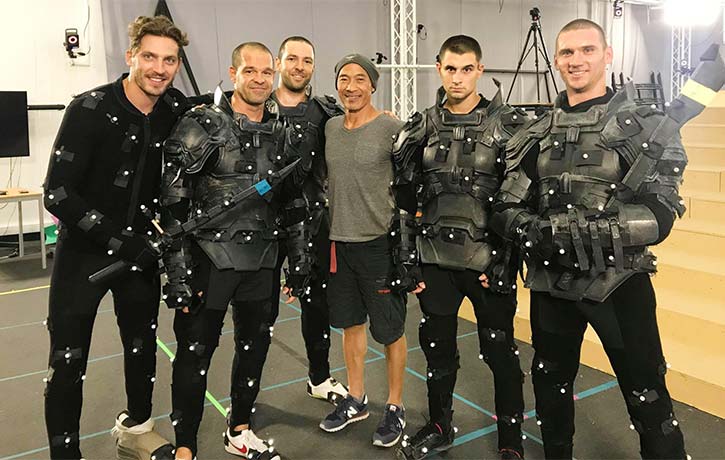
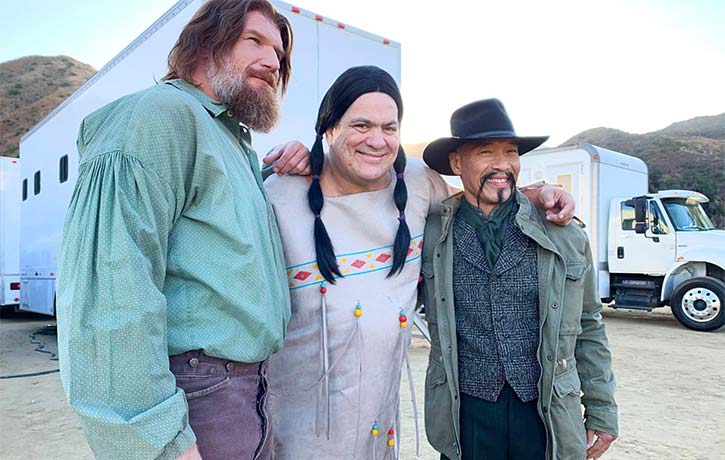
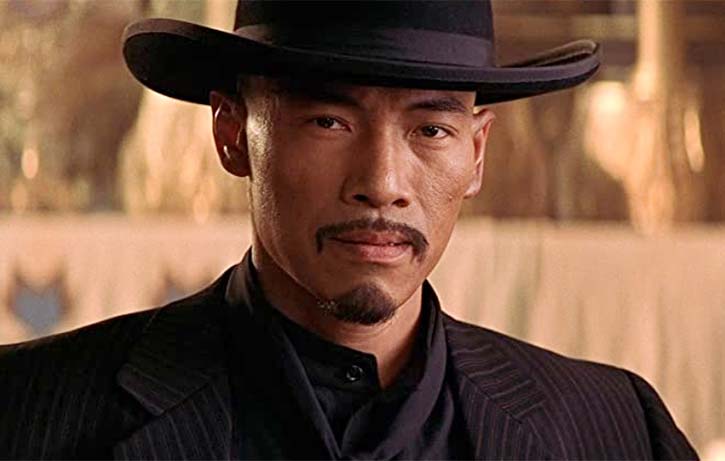
Запоминание шагов и связывание их воедино
Джош хотел увидеть всю картину целиком. После того как он прошёл обучение в Лос-Анджелесе, я стал оттачивать его движения. Он должен был выучить наизусть (механические или привычные) движения, наподобие танцевальных па. Сначала вы разучиваете все шаги, а затем связываете их воедино. Я начал связывать мысль, движение и намерение с самого начала. Я хотел, чтобы он делал это сначала в замедленном темпе, так у него было бы время приспособиться и понять, как двигается центр тела.
Я сказал ему: "Если бы ты был теннисистом, у тебя всегда был бы идеальный удар? Нет. И учитывая это, не будет ли это странно выглядеть, если ты несколько раз подряд выбьешь мяч за пределы поля через ограждение, прежде чем, как следует, отработаешь удар?"
“Ты должен дать себе это время, эту возможность совершать ошибки, но сейчас, поскольку мы делаем всё в замедленном темпе, ты точно также учишься и в более быстром темпе, даже если думаешь, что двигаешься медленно.”
Всем им вначале кажется, что у них ничего не выйдет, потому что они всё делают медленно. И я говорю им: "Сейчас всё кажется лесом, но есть тропа, есть этот путь. И прежде чем по нему пройти, вы должны взять своё мачете, чтобы расчистить путь. Затем вы ступаете на путь, который только что расчистили несколько раз, и как только он станет отчётливо виден, тогда вы сможете учиться."
То есть, двигаясь изначально в замедленном темпе, и увеличивая плотность на 10%, вы постепенно ускоряетесь. Я хочу, чтобы они уловили это течение, чтобы они чувствовали танец. И я думаю, отчасти в этом и заключается процесс обучения; в том, как быстро мы можем достичь такого уровня лёгкости и отточенности движений, чтобы нам не приходилось об этом думать. Чтобы это стало молниеносной реакцией.
Я думаю, моя задача, как координатора боёв - человека, работающего с актёрами, заключается в том, чтобы достичь такого уровня уверенности и лёгкости, чтобы тело чётко знало, как воспроизводить то или иное движение.
"Дюна". Дата релиза 1 октября 2021
Warner Brothers объявили, что "Дюна" выйдет 1-го октября этого года. Ты уже видел готовый фильм? И доволен ли ты своей работой в нём?
Роджер: Я ещё не видел готовый фильм, пока только трейлер, и он выглядит потрясающе. Я видел некоторые боевые эпизоды, визуальные эффекты почти завершены, и всё это здорово смотрится. Я счастлив, поскольку думаю, что именно этого и хотел Дени. Ещё видел несколько боёв на мечах в исполнении Джейсона и Тимоти, и тренировочный бой Тимоти и Джоша - я думаю, они проявили себя весьма достойно.
Работая над фильмом, тесно сотрудничая со всеми этими актёрами, я очень с ними сдружился. Думаю, они будут очень счастливы, увидев себя на экране, надеюсь зрители тоже обрадуются.
Грядущие проекты…
Скорее бы уже это увидеть! Итак, Роджер, какие ещё проекты у тебя в планах?
Роджер: Дени хотел, чтобы я сыграл роль в фильме, и если первый фильм выстрелит - а мы надеемся, что так и будет, - и мы закончим книгу, то я уже вернусь как персонаж лейтенант Ланвилл. У меня будет смертельная схватка с Фейд-Раутой, которая есть в книге.
Было несколько проектов, за которые я готов был взяться, но из-за COVID'а, все они сдвинулись на неопределённый срок. В общем, у меня имеется пара-тройка проектов, но пока ничего конкретного, на что я стопроцентно подписался. Пока жду новых предложений, но в целом наслаждаюсь жизнью и тренировками.
Ещё у меня выходит фильм - "Бумажные тигры" с моим братом Роном и Юдзи Окумото из "Парня-каратиста”, в котором я играю сифу Чунга. Его быстро прогонят по кинотеатрам, а потом состоится релиз на DVD, так что не пропустите!
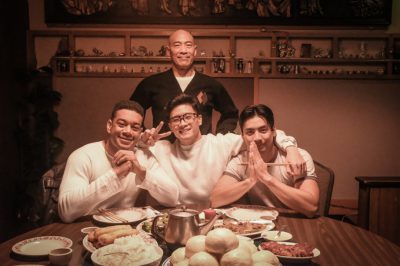
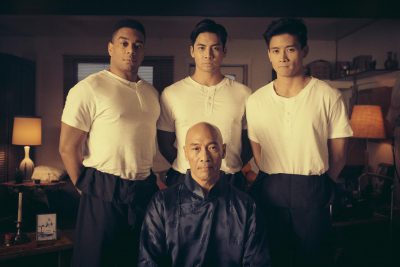
Амбиции и планы на будущее
Какие ещё мечты, цели и амбиции ты стремишься осуществить?
Роджер: Я смотрю, ты знаешь некоторых моих друзей, например Чада Стахелски, который прошёл весь путь от практика боевых искусств и работника на съёмочной площадке до человека, рассказывающего историю на экране посредством режиссуры. Я наблюдал за работой Дени, за тем, насколько точно он угадывает, какие решения хороши в визуальном плане, а какие нет, и как он руководит актёрами.
Я нахожу это невероятно сложным и пугающим. И я сам не прочь этим заняться, так как считаю это частью жизни, и, в конечном счёте, ещё одной формой творчества. Я хотел бы иметь возможность рассказать историю посредством режиссуры, будь то фильм или что-то для телевидения, я бы очень хотел попробовать.
Моя каждодневная цель - стараться быть лучшим человеком, становиться чуть лучше с каждым новым днём. Я всегда придерживался такого мышления, и не только как мастер боевых искусств; но и как отец, как партнёр, брат, сын и учитель. Думаю, если мне это под силу, это также может стать для меня, в каком-то смысле, творческим процессом, приносящим моральное удовлетворение, поскольку я убеждён, что каждый день необходимо бросать себе вызов.
Напутствие Роджера всем последователям и фанатам KFK
Роджер, ты очень вдумчивый человек и настоящий философ. Какое напутствие, будь-то воинская мудрость, цитата или философия, ты хотел бы оставить последователям KFK и своим фанатам по всему миру прямо сейчас?
Роджер: Эту мысль я озвучил ещё своим дочкам. Просто делай то, о чём мечтала твоя душа до того, как ты появился. Этой философией руководствуюсь не только я, но и мои дочери. Я верю, что наши души бессмертны. Поэтому, просто будь тем, кем мечтала стать твоя душа до того, как ты пришёл в этот мир.…
Это, наверняка, станет настоящим откровением для многих… откровением, способным помочь людям изменить свою жизнь и обрести духовную свободу. Ещё раз спасибо, Роджер, за то, что нашёл время поговорить с Kung Fu Kingdom.
Роджер: Спасибо, что пригласили. Для меня это честь.
Официальный источник: kungfukingdom.com
Дата публикации: 12.03.2021
Перевод: Black Dragon
Метки: 87eleven, Бенни Уркидес, Питер Каннингэм, Роджер Юань, Чак Норрис



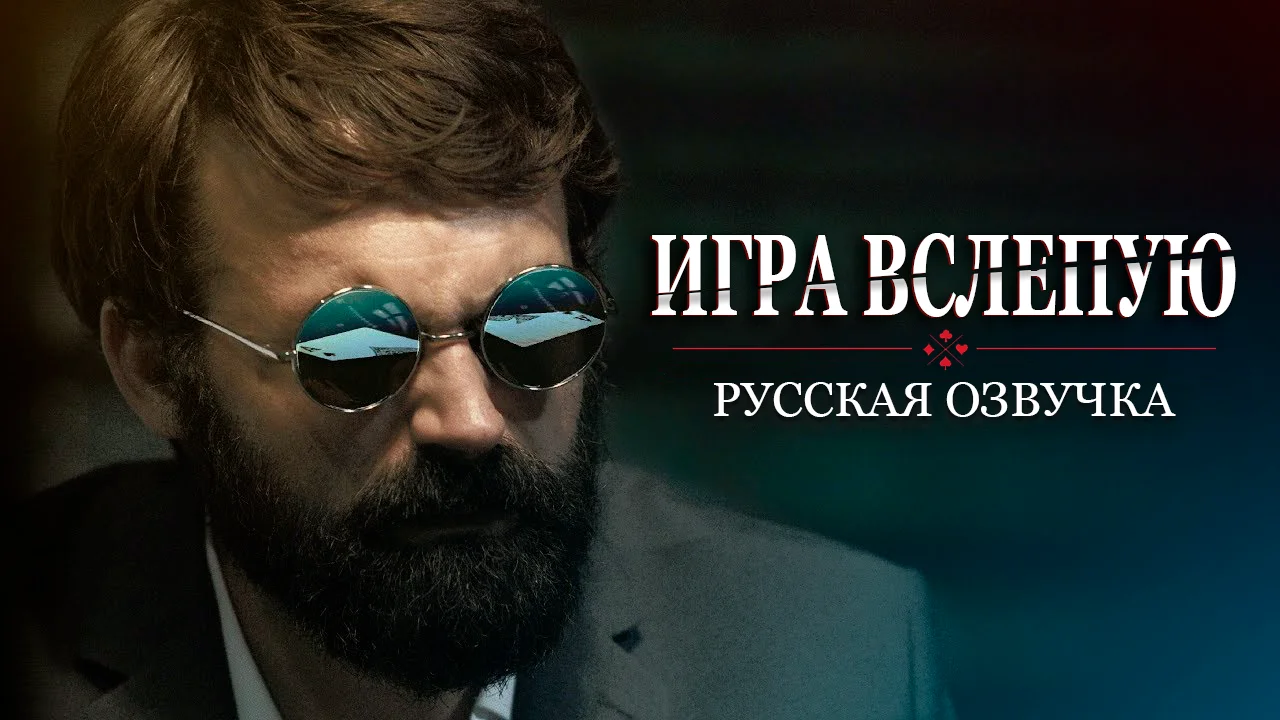

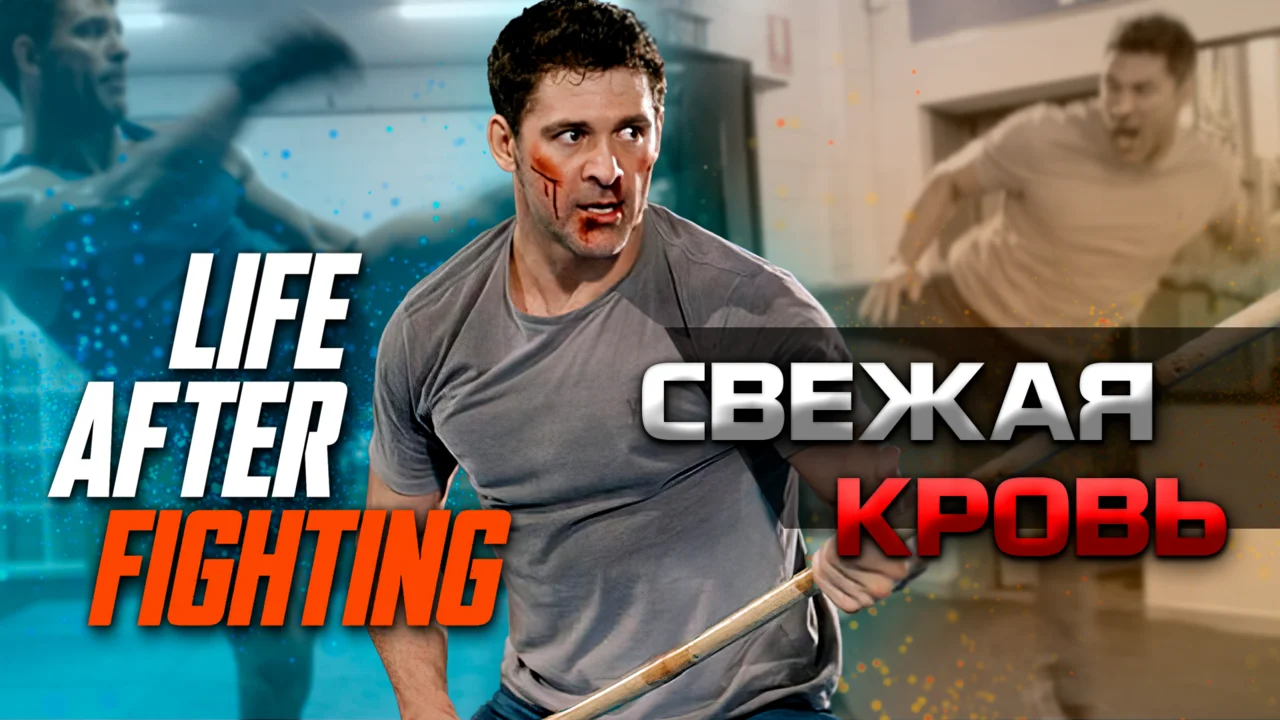
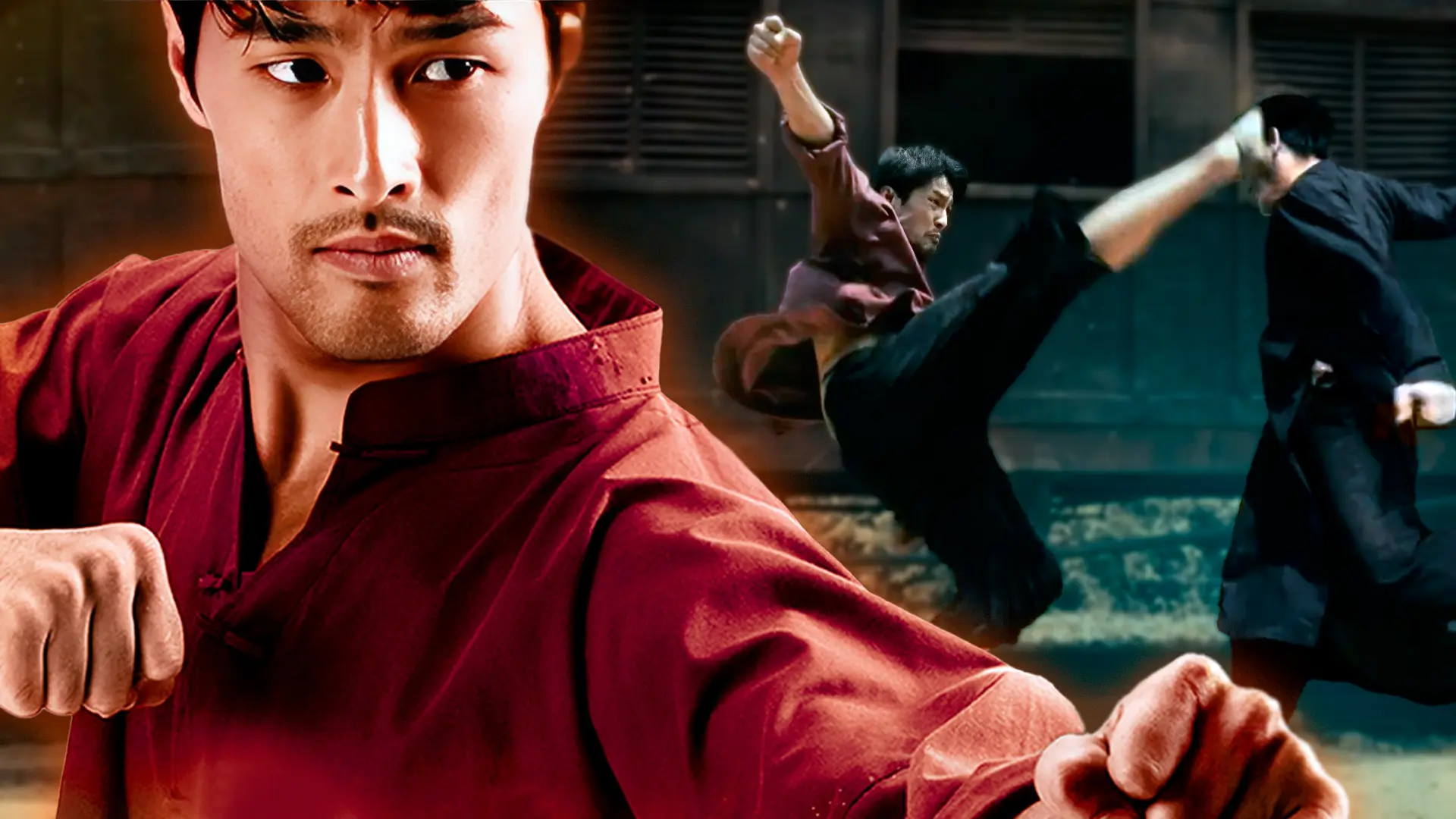
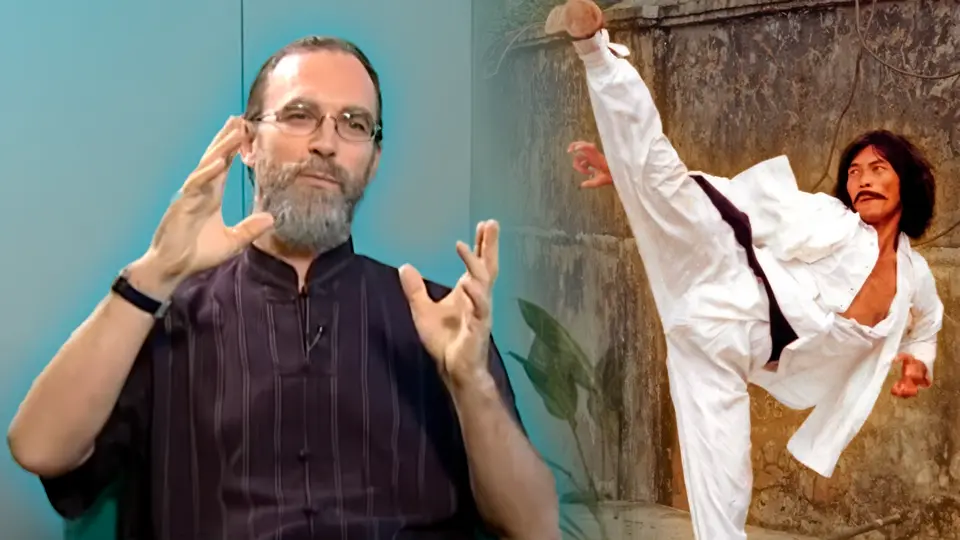
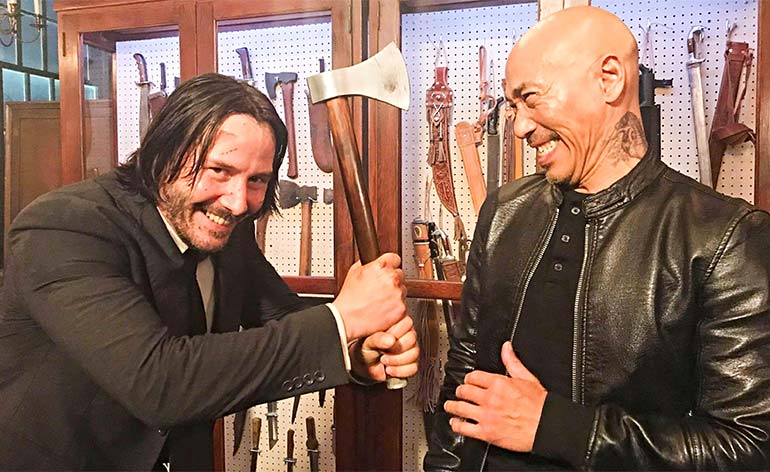
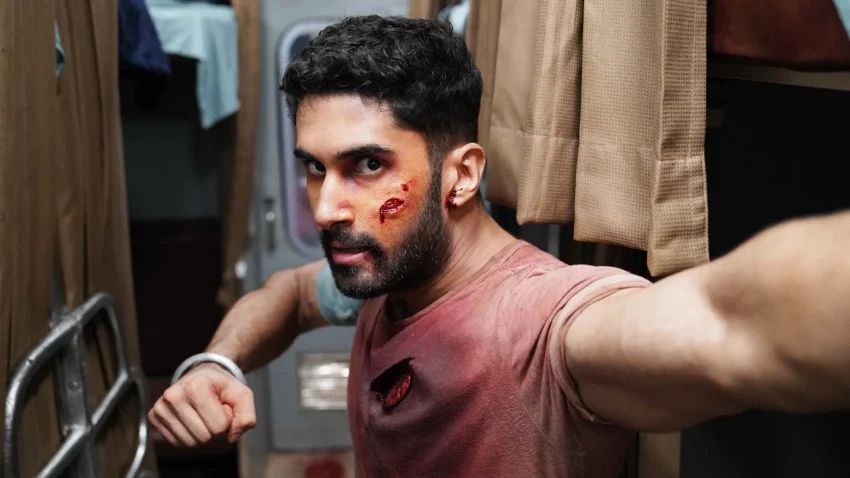

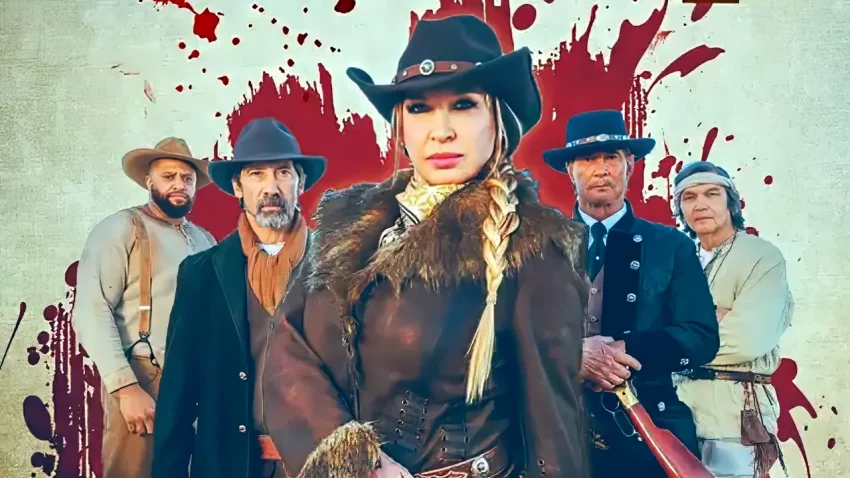
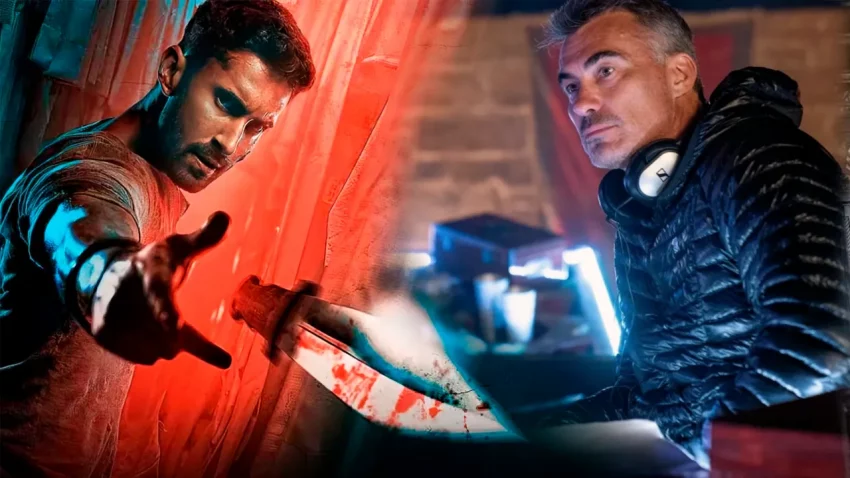


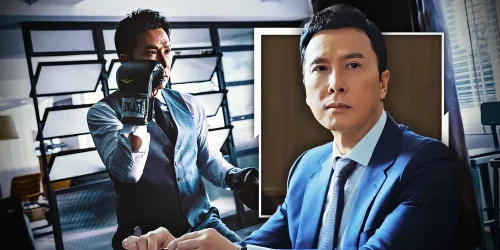
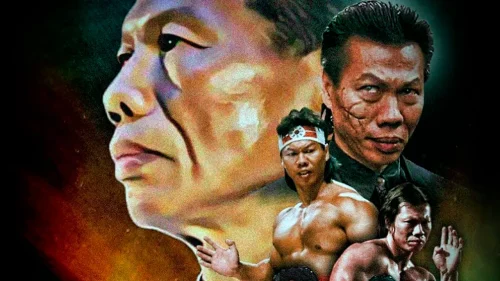
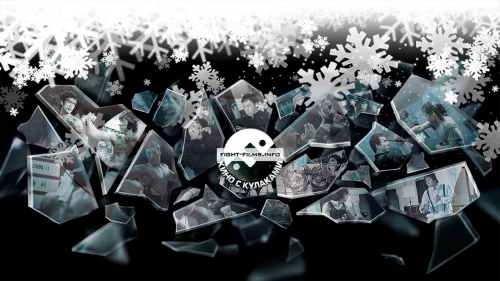
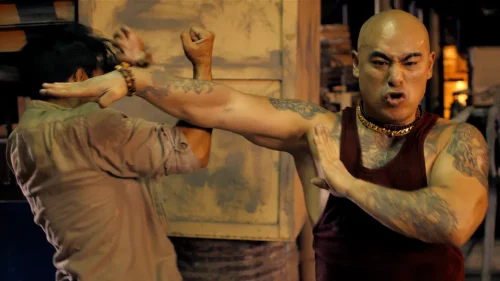


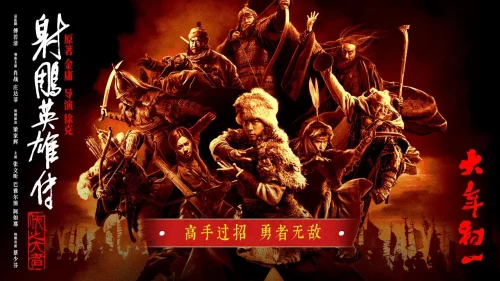
Огромное спасибо за перевод такого обстоятельного интервью! Много интересной информации для любого поклонника боевого кино.
Данил Чупахин,
Пожалуйста. ) Рад, если интервью было полезным и информативным. Да и вообще приятно осознавать, что в 2К21-м люди ещё читают буквы. Мне кажется, сейчас многие только видео-формат признают, а читать уже как-то ленятся. Интервью с Брахимом будет чуть позже.
Black Dragon,
Может то - молодежь совсем. Хотя...